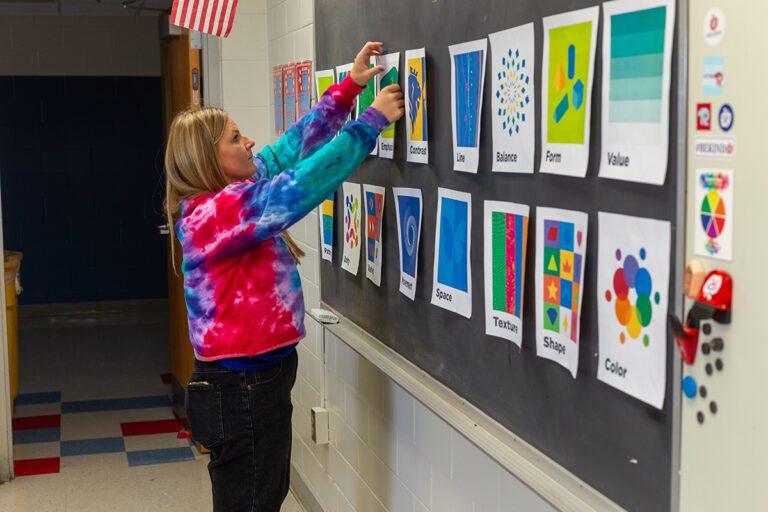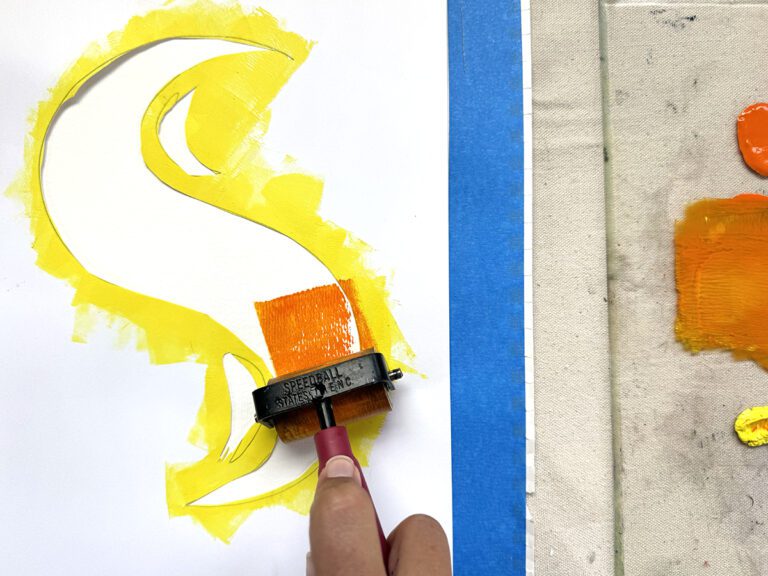Art Education and the Coronavirus (COVID-19)
Online learning requires several shifts from the physical classroom, and organizations can vary in their handling of materials for students. Setups can range from expecting students to purchase a set of supplies from a teacher provided list to schools providing at-home kits with everything needed. For some schools, however, neither are possible, and teachers must develop lessons that allow for flexibility with materials based on what students have available at their home. While this might appear limiting at first, there are a number of artists creating thought-provoking work from basic materials. Here are five artists to share with your students who prove expensive materials aren’t required to produce great work.
Paper: Yulia Brodskaya
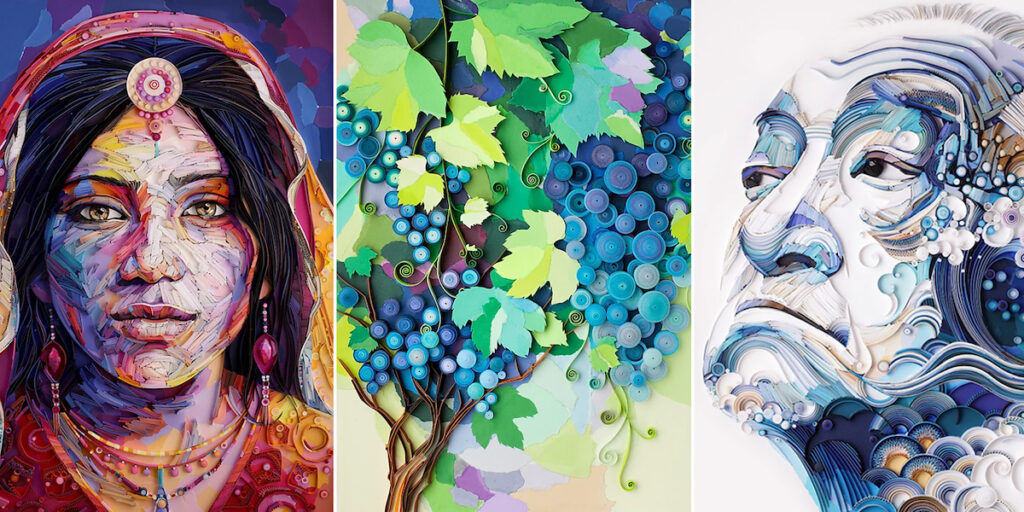
With only paper and glue, Yulia creates an engaging body of work that reflects a variety of subject matter and design. Her bold and expressive artwork showcases her experiences in design and illustration and can engage your students interested in typography, portraiture, design, nature, and more. Seeing the finished projects can be intimidating, but her website includes several videos that can help you and your students learn how to manipulate the paper to create different effects. Students can experiment with a variety of papers found around their homes or neighborhoods to create their work—for example, newspaper, construction paper, flyers, magazine paper, etc. Local stores and restaurants might also have free flyers or recycled paper, and posters students could collect. Ultimately, anything that can fold or roll will work!
Pen: Mark Powell
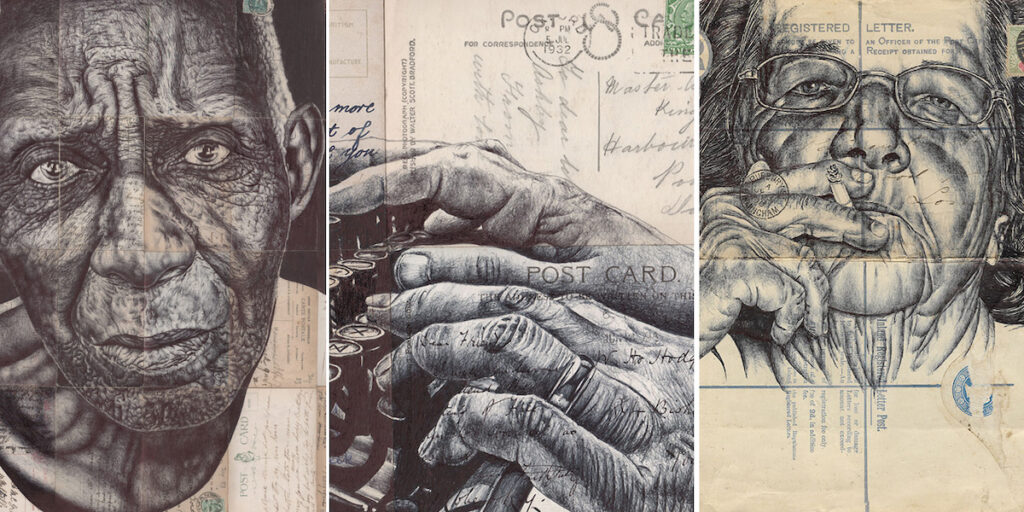
Mark’s meaningful work engages your students who want to tell a story, and he only needs two inexpensive items to do it; a recycled surface for canvas and a ballpoint pen. His drawing tool of choice is meant to inspire as he wants “people to give it a go without feeling the need to spend money on arts and crafts.” Mark’s work is also accessible because he demonstrates how items can be recycled as a meaningful canvas. Mark uses maps, envelopes, newspapers, etc. to add a meaningful layer to the work and a connection to the subject. Students might not have letters from a historical era, but they could work from a newspaper, junk mail, flyer, envelope, food wrapper, etc. His work is a great study for portraiture, values, subject, layering, and rendering.
Found Objects: Jane Perkins
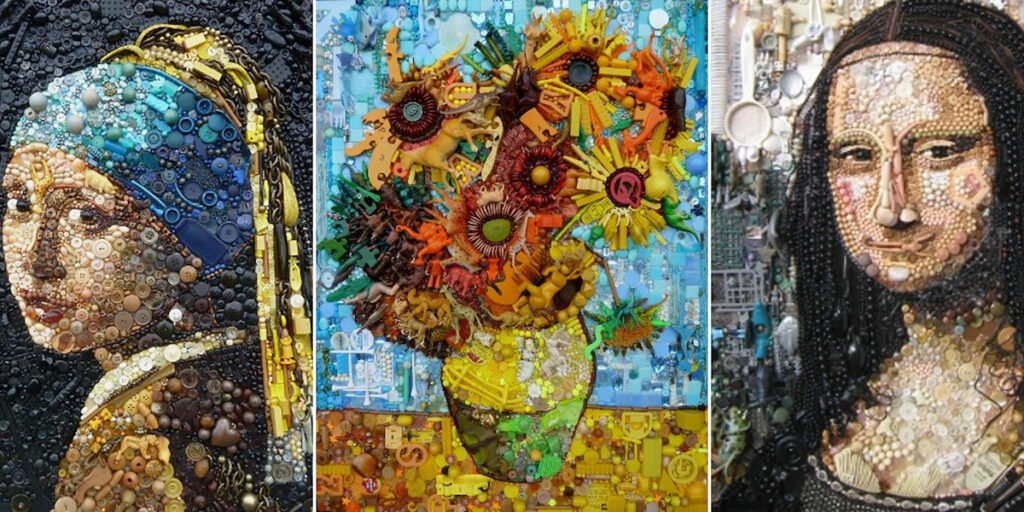
Jane calls herself a “re-maker” as she uses found objects to create her work. By looking closely at each piece, you can see that anything is included as long as it has the right color, shape, and size. The subject matter is often a re-creation from Old Masters or an iconic image, but it’s made up of objects you’ve seen countless times and likely never considered putting in an art piece. A children’s toy, game piece, pen cap, and more can be discovered by analyzing her work. Your students will be engaged by admiring each unique creation, and the experience can change how they look at random objects. Students can start building a collection of items by looking in and around their homes. Once students have a large enough stock and an idea, they just need a little glue to bring it all together.
Tape: Darel Carey

Darel’s illusions can challenge your perceptions of space with the use of line and tape. His work is fun and evokes a reaction as you consider reality and perceptions. Installation projects like his are a great catalyst to an online learning assignment as students have access to different spaces in their homes that could offer more opportunities than a traditional classroom. While Darel often works with vinyl and gaffers tape, students could also use yarn, ribbon, duct or painters tape, or anything else that can create a line. His website features videos of his process, and it suddenly seems less daunting when you see him start with one single line.
Cardboard: Warren King
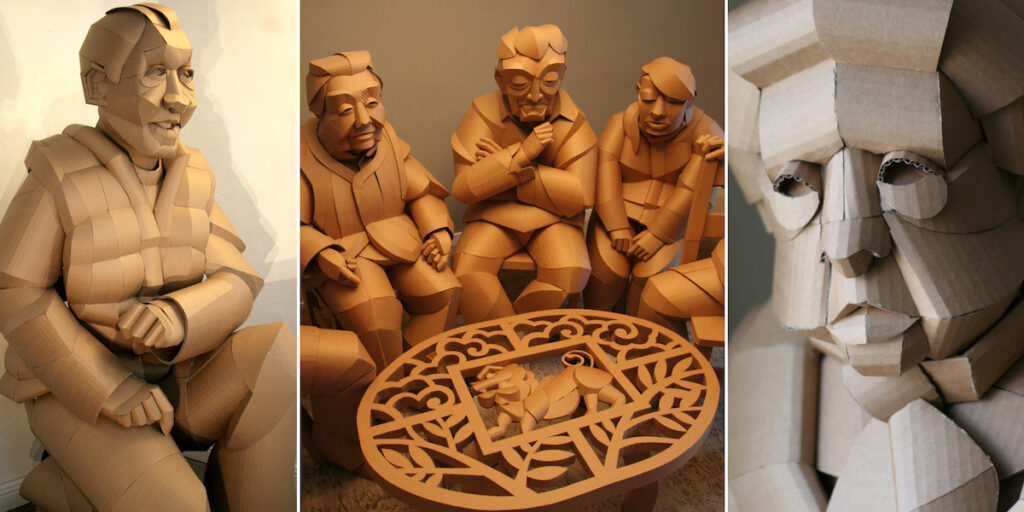
Inspired by a trip to China, Warren’s life-size figures are so expressive you forget they are made from cardboard and glue. Each aspect of his work is intentional, and it’s a lesson for students in how meaning can be created and communicated through the material, the subject, and the composition or structure. At home, students can access cardboard from moving boxes, shoeboxes, food boxes like cereal, and more. If that’s not possible, students can also connect with a local retailer and pick up boxes that might otherwise be recycled or discarded. Warren also proves you can create engaging sculptures without relying on paint or color and the standard brown works.
There are a number of models for handling materials with online learning, and sometimes students might need to rely on what is readily available. Creating assignments and projects from supplies, like pens and tape, can make artmaking more accessible and eliminate a barrier for students or schools who can’t afford a supply kit. We don’t always see artists using the basic materials represented here, but they exist and are creating awe-inspiring work that can motivate your students. Use these artists and more to show students great ideas that can create art, even if it’s built from a cereal box.
Who are other artists using basic supplies that we can share with students?
What other readily available supplies can be used to create art?
Magazine articles and podcasts are opinions of professional education contributors and do not necessarily represent the position of the Art of Education University (AOEU) or its academic offerings. Contributors use terms in the way they are most often talked about in the scope of their educational experiences.




